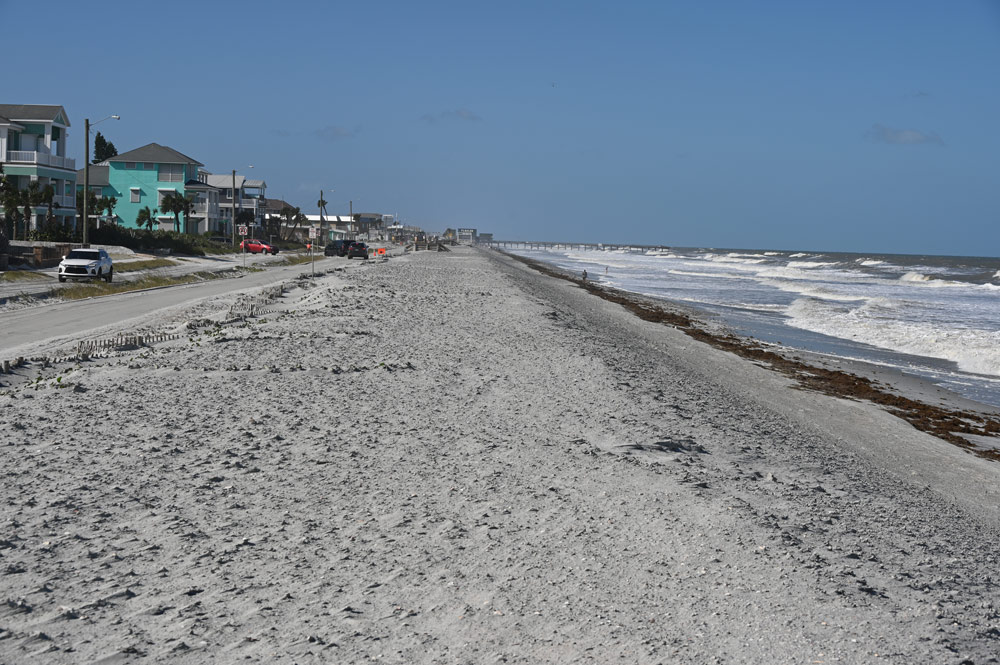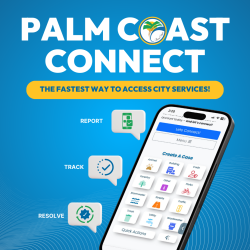
Flagler County and state environmental officials are hosting a workshop and hearing Thursday evening in Bunnell that will set a new and perpetual boundary between private properties and state property along the county’s beaches, what is officially referred to as an Erosion Control Line. The new ECL is slated for what’s called Reach Two on the county’s beaches, from North 7th Street in Flagler Beach to the northern limits of Varn Park.
The subject matter is a bit seaward of incomprehensible at first sight, as is the meeting notice: “FDEP Erosion Control Line Workshop and Hearing.” But it’s a crucial and legally-required step on the way to renourishing or rebuilding the county’s beaches. And it has implications for beachside property owners, though not as worrisome as property owners may fear. But it’s not new.
When Flagler County and DEP held a similar workshop and hearing for the U.S. Army Corps renourishment project in Flagler Beach five years ago, there was a lot of confusion among the public about what the process meant, and fears that it would result in the loss if some private property. That is not the case. If anything, the new Erosion Control Line, or ECL, establishes a boundary that will define where beaches are to be rebuilt when eroded, and in so doing, protect upland properties. But in some cases, property owners may–and have in the past, elsewhere in the state–dispute where the line is drawn and claim that their property is being encroached.
That’s why the workshop and hearing is taking place: to give the public, including beachside property owners, a chance to weigh in, understand the line, see it as it will be drawn (the surveys have been completed, the line has been drawn, but not officially adopted), and dispute it if they so wish. That may delay future beach renourishment efforts. But it won’t stop the state from eventually setting that line. No such disputes are expected in Flagler County.
The workshop starts at 5:30 p.m. at the Government Services Building. It will be le by William “Guy” Weeks, a planning manager with the Department of Environmental Protection (DEP) under the office of resilience and coastal protection. He will be the hearing officer for the proceedings, and will likely be joined by county officials. Weeks has been holding similar hearings in other regions in the state where ECLs are being set.
“At the end of the process, I will be writing a hearing officer’s report to share with the Division of State Lands that’s within DEP,” Weeks said, explaining the process at an identical meeting organized for the residents of Treasure Island on the Gulf of Mexico a few weeks ago. “That report will either say everything is good with this proposed erosion control line and we need to move forward, or there might be some problems that need to be addressed.” The crucial caveat: no beach renourishment project will move forward without an ECL in place, he said. “If something gets held up in court for some reason, that will delay the process for the project to move forward. So we’re hoping that we’ve got a solid survey, that we’ve thought everything through and and that the process can move forward, not only for the sake of the survey, but for the sake of the project to move forward.” (Treasure Island, like Flagler County’s beaches, was set for a renourishment project of its own, on a beach that’s been renourished since 1969.)
“We want to have an accurate boundary for the public beach that’s going to be used and the public funds that’s going to be used to restore that beach,” Weeks said. His report will go to the governor and the Florida Cabinet for approval. Once that’s done, it’ll get recorded at the Flagler County courthouse, and the ECL will be permanent.
In Florida, the the mean high water line is the boundary between upland ownership of the beach and the state’s ownership of the lands underwater. Anything under the ocean in Florida is owned by the state of Florida, in trust for the people. Anything upland, east of the line, may be in private ownership. “The beach is a dynamic environment. It’s not as simple as when you’re on just solid land, knowing where a boundary is,” Assistant County Attorney Sean Moylan said. So it’s a 19-year average of whare the high-tide line is, and it fluctuates over time.
“When you establish an erosion control line or ECL,” Moylan said, “you’re taking that mean high water mark, where it is right now, and freezing it forever, going forward, in perpetuity. You’re saying: okay, where that line is now is where it’s going to be established in perpetuity. We’re sort of freezing the border, and we’re turning this beach into an engineered beach with a permanent boundary. And so if there were future storm events that created a lot of erosion and we had to renourish the beach, we know where the boundaries are. We know where we’re going to build it back to.”
Theoretically–and not-so theoretically since Hurricane Matthew and the increasing erosion caused by higher seas and more violent storms–a hurricane could carve out enough beach that a private property could find itself in water–in state waters. “That would be a kind of an unusual situation, but the idea is that we would rebuild that beach back to that new permanent line,” Moylan said. But that also means that even as the sea level continues to rise, the ECL established this year will remain the baseline around which future beach reconstruction projects will be built.
Controversies have arisen on beaches along the Gulf of Mexico where, being vast but also eroded, the new ECL established there has taken away chunks of what used to be private property, because it happened to be underwater. Property owners there have argued that the beach could come back without renourishment, restoring what used to be their private property portions. Those scenarios are not as likely in Flagler, even though erosion has been severe in some places.
“Our beach is much smaller here compared to the Gulf,” Moylan said. “I don’t think we’ve had that same type of controversy on the East Coast of Florida. I think the better way of looking at it is, oh great. Now this uncertainty is taken away, and I know where my property is, and if funding is available, we will have it restored.”
The ECL will not change land ownership, access and use of beaches.
Following Thursday’s hearing, there is an additional 21-day period for the public to provide comments




























Hammock Huck says
The repercussions are beginning to surface for allowing the multi-million, three-story homes that are seldom occupied on our dunes. How much money are these homeowners willing to sacrifice to lobbyists to avoid being within the parameters of the new Erosion Control Line? Just because you’re wealthy, doesn’t mean you’re smarter than everyone else. Oh, and in case you haven’t noticed, I support the new ECL.
Deborah Coffey says
And, Trump/Musk are worried about “waste, fraud, and abuse?” Climate change wins this one; the Ocean will eat all those properties within a few years.
Pogo says
@Here today
…DOGE tomorrow…
Lance Carroll says
“Like Sands Through The Hourglass.”
Victor says
Haha didn’t the orange stain just end FEMA, research of all kinds, grants, federal funding ,people’s rights, etc ..etc… started a full blown class war!… .hottest year ever again! Almost hurricane season! Good luck with that constant rebuild…
Donald Trump says
You can’t stop no her nature, especially when you don’t believe in Climate Change. I say let Mother Nature wipe all build up structures from the face of the earth
Endless dark money says
That’s the plan! We should be well over 2 degrees within a few years and rapid acceleration from there once with tipping points tipped. once we get to 4 degrees c there is nothing larger than a cockroach alive. That should be by 2060 or so in very optimistic scenarios. Kids born today won’t live past 40 thanks to the republicons . We’ve know for 150 years but misinformation and greed won. Get your kicks in young people cause this place gonna burn baby burn!
Stephen Bradley says
Not necessarily connected to this article, but I do have a question about the south 28th street dune crossover.
I have been told the silt fence and the vegetation planting was not connected to the 28th street crossover because the landowners adjacent to this area did not want their view spoiled. I not sure that’s true even though the explanation came from the corp of engineers. Anyone know anything about this???